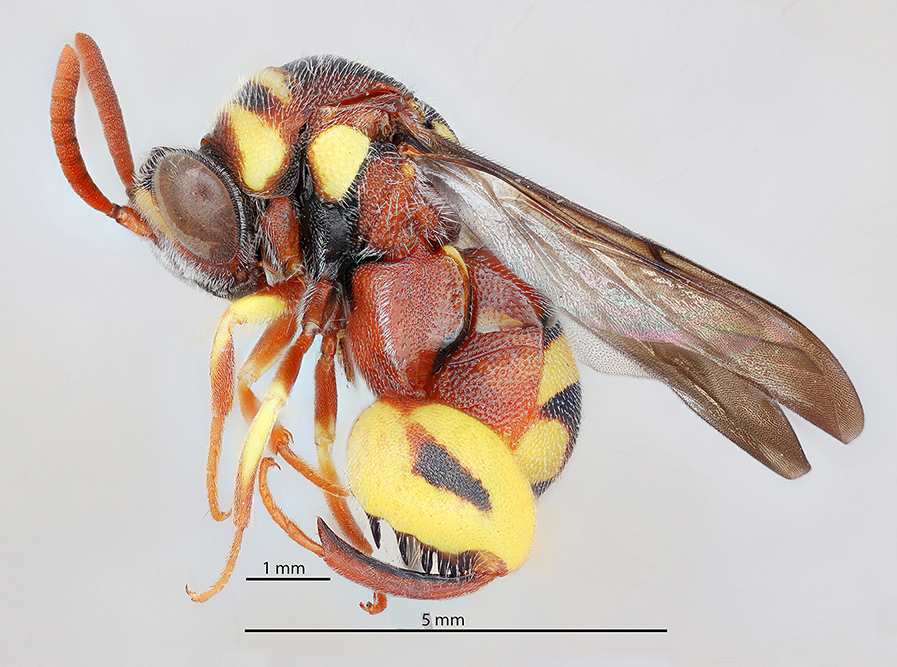Leucospis sp. (Hymenoptera: Chalcidoidea: Leucospidae)
The subject of the insect of the week (64) is Leucospis sp., an intriguing genus of (mostly) large, colourful wasps which are ectoparasitoids of the larvae of aculeate (i.e. with a stinging apparatus) wasps and bees, especially the latter. The genus is known for its greatly inflated hind coxae and femora, the latter equipped with impressive femoral teeth (see image). In Kenya the most important hosts of Leucospis are megachilid bees of the genus Osmia. Leucospidae is a small family, creatures of xeric habitats. Leucospis is the largest genus with 131 species worldwide. It is the type genus of the family, described by the great Danish entomologist Johann Christian Fabricius who described about 10,000 new insect species during his lifetime! Early in his career, Fabricius studied under the great Swedish naturalist himself, Carl Linnaeus. Micrapion, an African endemic, has only 12 species but they can be large in number during certain times of the year. A third genus, Neleucospis, known only from Sierra Leone, has but a single species. Kenya’s known leucospid fauna is limited to 4 Leucospis and 2 Micrapion species. Recently, the first fossil Leucospis was discovered in early Miocene amber from the Dominican Republic. It dates the oldest known Leucospis at ca. 21 million years old.
Female Leucospidae have a distinctive longitudinal channel that curves upwards and forwards from the apex of the abdomen. The ovipositor rests in this channel. When needed, the ovipositor bends back ventrally and drills a hole through any protective covering of the host’s nest. Egg(s) are laid in the nest and, after hatching, the leucospid larva searches out and kills any potential competitors that happen to be present (conspecifics or other parasitoid species). When finished, the leucospid larva locates the host larva and attacks it, anchoring the mouth of the parasitoid to its host. It then begins to feed on the host’s hemolymph. Leucospids are ectoparasitoids and only their mouthparts enter the body of the host. The parasitoid pupates within the nest, remaining there until it emerges as an adult. Leucospidae adults feed on nectar.
The specimen in the image was collected at the beginning of the short rainy season of 2020 on the farm of Mr. Mulu Musingila in eastern Kenya at an elevation of 733 m above sea level. Mr. Musingila was an ICIPE field worker, and his farm has accumulated a measure of fame because of the many interesting species we have collected there.

Credits: Dr Robert Copeland

